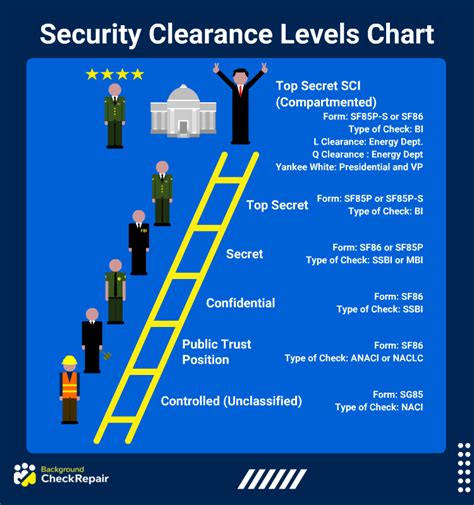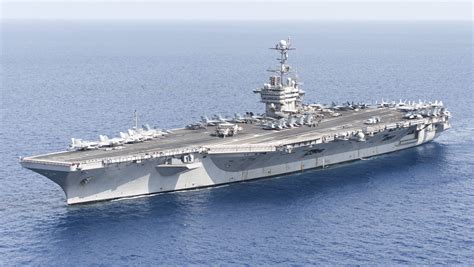The process of obtaining a Top Secret security clearance is a meticulous and thorough one, designed to ensure that individuals who have access to sensitive information are trustworthy and loyal to the United States. This level of clearance is typically required for positions that involve handling classified information related to national security, defense, or other critical areas. The journey to obtaining a Top Secret clearance begins with a thorough background investigation, which can take several months to a year or more to complete, depending on the complexity of the case and the workload of the investigative agencies.
According to the Office of Personnel Management (OPM) and the Defense Counterintelligence and Security Agency (DCSA), the primary agencies responsible for conducting background investigations for security clearances, the process involves a detailed review of the applicant's personal history, including their financial records, employment history, education, and personal relationships. This is done to identify any potential vulnerabilities that could be exploited by foreign entities or other adversaries, thereby compromising national security. The Adjudicative Criteria for Determining Eligibility for Access to Classified Information, outlined in SEAD 4, provide the framework for evaluating the results of these investigations.
Key Points
- The process for obtaining a Top Secret security clearance involves a thorough background investigation.
- The investigation is conducted by agencies such as the Office of Personnel Management (OPM) and the Defense Counterintelligence and Security Agency (DCSA).
- The Adjudicative Criteria for Determining Eligibility for Access to Classified Information, as outlined in SEAD 4, are used to evaluate the results of the background investigation.
- Top Secret clearances are typically required for positions involving access to sensitive information related to national security or defense.
- The clearance process can take several months to over a year to complete, depending on the complexity of the case.
The Background Investigation Process
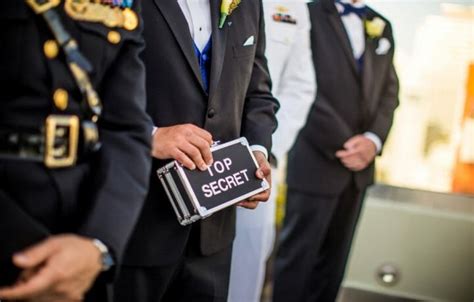
The background investigation for a Top Secret security clearance is a comprehensive process that involves several steps. It begins with the applicant filling out a detailed questionnaire, known as the Questionnaire for National Security Positions (SF-86), which asks for information about their personal history, including any past criminal activity, financial issues, substance abuse, or foreign contacts. This form is designed to capture a broad range of information that could be relevant to the clearance decision.
Once the SF-86 is submitted, the investigative agency conducts interviews with the applicant's acquaintances, employers, and other relevant individuals to verify the information provided and gather additional insights into the applicant's character and behavior. These interviews are a critical part of the process, as they provide a more nuanced understanding of the applicant's background and help to identify any potential issues that may not be immediately apparent from the questionnaire.
Types of Background Investigations
There are several types of background investigations that can be conducted for security clearances, each with its own level of scrutiny and requirements. For a Top Secret clearance, the investigation typically involves a Single Scope Background Investigation (SSBI), which is the most comprehensive type of investigation. The SSBI includes a review of the applicant’s credit history, interviews with acquaintances and employers, and checks of local law enforcement records, among other elements.
| Type of Investigation | Description |
|---|---|
| Single Scope Background Investigation (SSBI) | The most comprehensive type of investigation, involving a review of credit history, interviews, and checks of local law enforcement records. |
| National Agency Check with Law and Credit (NACLC) | A less comprehensive investigation that involves checks of federal agencies and credit records. |
| Moderate Risk Background Investigation | Conducted for positions that involve access to classified information but do not require a Top Secret clearance. |
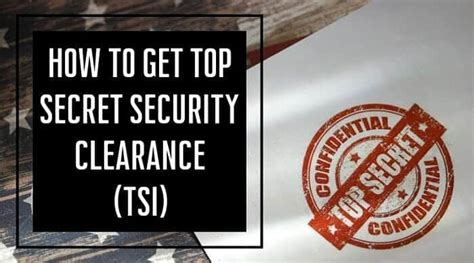
Adjudication and Clearance Decision
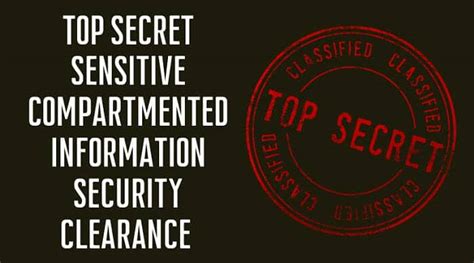
After the background investigation is complete, the results are reviewed and adjudicated to determine whether the applicant is eligible for a Top Secret security clearance. This involves evaluating the information gathered during the investigation against the Adjudicative Criteria for Determining Eligibility for Access to Classified Information. These criteria include factors such as allegiance to the United States, foreign influence, misconduct or neglect of duty, and other areas that could potentially impact an individual’s ability to handle classified information responsibly.
The adjudication process is designed to be thorough and fair, taking into account the whole person concept, which considers the applicant's overall character and the circumstances surrounding any issues that may have been identified during the investigation. The goal is to ensure that individuals who are granted a Top Secret clearance are not only trustworthy but also capable of maintaining the confidentiality of sensitive information.
Appealing a Clearance Denial
In cases where a Top Secret security clearance is denied, applicants have the right to appeal the decision. This involves submitting additional information or context that may not have been considered during the initial adjudication process. The appeal is reviewed by a separate adjudicative authority, which can either uphold the original decision or grant the clearance based on the new information provided.
It's worth noting that the appeal process can be complex and may require legal representation. Applicants should carefully review the reasons for the denial and gather any relevant evidence or testimony that could support their appeal. The DOHA (Defense Office of Hearings and Appeals) plays a crucial role in this process, providing a forum for applicants to present their case and receive a fair hearing.
What is the primary purpose of a background investigation for a Top Secret security clearance?
+The primary purpose of a background investigation for a Top Secret security clearance is to ensure that the individual is trustworthy and loyal to the United States, and to identify any potential vulnerabilities that could compromise national security.
How long does the process of obtaining a Top Secret security clearance typically take?
+The process can take several months to over a year to complete, depending on the complexity of the case and the workload of the investigative agencies.
What happens if a Top Secret security clearance is denied?
+In cases where a Top Secret security clearance is denied, applicants have the right to appeal the decision by submitting additional information or context for review.
In conclusion, obtaining a Top Secret security clearance is a rigorous and time-consuming process that is designed to protect national security by ensuring that individuals with access to sensitive information are trustworthy and loyal to the United States. The process involves a thorough background investigation, adjudication based on established criteria, and the possibility of appeal if the clearance is denied. It is a critical component of the national security framework, and its importance cannot be overstated in today’s complex and ever-evolving security landscape.
